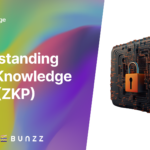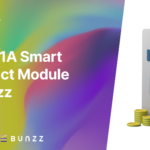Introduction
Ethereum Virtual Machine (EVM) compatibility has emerged as a pivotal stepping stone, as demonstrated by some of the most popular blockchains today, including Avalanche, Binance Smart Chain, Fantom Opera, and Polygon.
In this guide, we will delve deep into the concept of the Ethereum Virtual Machine, explore its use cases, and understand the significance of EVM-compatible blockchains in revolutionizing scalability and enhancing user experiences in the decentralized world.
Understanding the Ethereum Virtual Machine (EVM)
1.1 What is EVM?
The Ethereum Virtual Machine (EVM) is a revolutionary software environment that executes smart contracts on the Ethereum blockchain. Serving as a distributed state machine, it runs concurrently on numerous nodes across the Ethereum network. The EVM functions akin to a virtual CPU, adeptly executing bytecode, which essentially represents the compiled form of smart contracts written in Solidity, Ethereum’s designated programming language.
1.2 How does EVM work?
As a Turing-complete virtual machine, the EVM is remarkably versatile, enabling it to execute any algorithm or program. Crucially, it is designed to be deterministic, which ensures that the execution of smart contracts produces identical output for the same input, regardless of the executing node. This determinism plays a pivotal role in achieving consensus across the Ethereum network.
Furthermore, the EVM operates in complete isolation from the host machine’s operating system, thereby creating a secure sandbox for executing smart contracts. This isolation elevates security levels, mitigating the risk of unauthorized access to the underlying system and protecting the overall integrity of the blockchain.
The Need for EVM-Compatible Blockchains
2.1 Challenges in the Ethereum Network that Necessitate EVM-Compatible Blockchains:
Ethereum, as the trailblazer in deploying smart contracts, faced significant challenges due to its rapid growth. Scalability became a pressing concern, manifested in slow transactions and soaring gas fees. More of the challenges are listed below:
- Scalability issues: Ethereum’s rapid growth has resulted in scalability challenges, leading to slower transaction times and higher gas fees.
- High gas fees: The increasing demand for Ethereum transactions has driven up gas fees significantly, making it costly for users to interact with the network.
- Limited capacity: Ethereum’s current capacity is limited, making it challenging to accommodate a growing number of users and DApps.
- Network congestion: During peak periods, Ethereum often experiences network congestion, causing delays and inefficiencies in transaction processing.
- Energy consumption: Ethereum’s proof-of-work consensus mechanism consumes significant energy, contributing to environmental concerns and sustainability issues.
- Slow confirmation times: Ethereum’s confirmation times can be lengthy during periods of high network activity, resulting in slower transaction finality.
2.2 Optimized Solutions
To address Ethereum’s limitations effectively, several permissionless blockchains rapidly offered alternatives featuring improved scalability and lower gas fees. These EVM-compatible blockchains cleverly adopted a similar architecture to Ethereum, capitalizing on its benefits without starting development from scratch. This pragmatic approach allowed developers to expedite the process of building and deploying smart contracts and DApps, ultimately resulting in faster transactions and greater capacity. Additionally, the reduced energy consumption per transaction made these EVM-compatible blockchains more environmentally sustainable.
- Scalability: EVM-compatible blockchains optimize consensus mechanisms and network architectures to achieve higher throughput, enabling faster transaction processing and reducing congestion.
- Low Gas Fees: These blockchains implement more efficient gas models or utilize alternative consensus mechanisms like proof-of-stake to reduce gas fees significantly.
- Increased Capacity: EVM-compatible blockchains are designed to handle higher transaction volumes, providing the ability to scale seamlessly as the user base grows.
- Reduced Network Congestion: By distributing transactions across a network of validators, EVM-compatible blockchains alleviate network congestion, ensuring smoother and more reliable transaction processing.
- Sustainable Energy Consumption: Many EVM-compatible blockchains adopt proof-of-stake, which drastically reduces energy consumption compared to Ethereum’s proof-of-work model, leading to a more eco-friendly solution.
- Faster Confirmation Times: The improved scalability and consensus mechanisms of EVM-compatible blockchains result in faster block confirmation times, reducing transaction settlement delays.
Benefits of EVM-Compatible Blockchains
3.1 Portability & Interoperability
EVM compatibility empowers developers to write and deploy smart contracts across multiple EVM-compatible blockchains with minimal code modifications. This portability fosters interoperability, facilitating seamless cross-chain interactions and the creation of multi-chain DApps.
3.2 Lower Development Costs
By writing smart contracts once and deploying them on any EVM-compatible chain, developers can significantly reduce the need for maintaining separate codebases for each blockchain. The standardized environment provided by the EVM, coupled with the use of Solidity as a common programming language, streamlines development efforts, ultimately leading to cost savings.
3.3 Wider User Base & Developer Ecosystem
EVM-compatible blockchains inherently operate within the Ethereum network, providing developers with access to a vast user base of over 100 million unique wallets. This enhanced exposure expedites mass adoption for DApps built on EVM-compatible networks, fostering a thriving developer ecosystem.
Notable EVM-Compatible Blockchains:
- Polygon ( Matic): Polygon is a Layer 2 scaling solution built on top of Ethereum, providing fast and low-cost transactions. It achieves this through sidechains and Plasma, allowing developers to deploy and migrate smart contracts seamlessly.
- Binance Smart Chain (BSC): BSC is another EVM-compatible blockchain developed by Binance. It offers low transaction fees and high throughput, making it an attractive option for DApps and DeFi projects.
- Fantom Opera: Fantom is a high-performance EVM-compatible blockchain that employs aBFT consensus, ensuring fast finality and low fees. It focuses on decentralized finance and interoperability between different networks.
- Avalanche: Avalanche is a highly scalable EVM-compatible platform that utilizes Avalanche consensus to achieve high throughput and near-instant confirmations, enabling efficient DeFi applications.
- Cardano: Cardano, a third-generation blockchain, is EVM-compatible and aims to address scalability and sustainability concerns through its proof-of-stake consensus mechanism and innovative protocol design.
- Tron: Tron is a popular EVM-compatible blockchain that prioritizes high throughput and low transaction costs, attracting developers interested in building decentralized applications and digital entertainment platforms.
There are more EVM compatible blockchains out there.
.
Conclusion
EVM-compatible blockchains have emerged as a game-changing solution to address scalability and interoperability challenges in the blockchain industry. Leveraging the Ethereum Virtual Machine, these blockchains offer faster transactions, lower gas fees, and increased capacity, revolutionizing the decentralized user experience.
Through EVM compatibility, developers can create multi-chain DApps and effortlessly interact across different blockchain networks. As the blockchain industry continues to evolve, EVM-compatible blockchains will play a pivotal role in shaping the future of decentralized applications and fostering enhanced blockchain interoperability.







